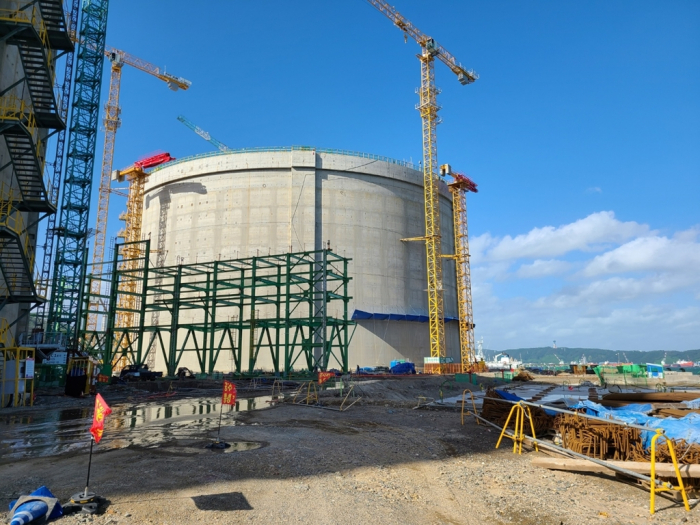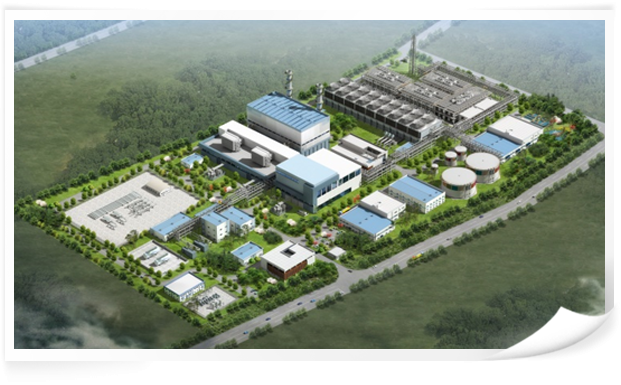Carbon neutrality
S.Korea’s SK Gas expands LNG, hydrogen biz for future
SK Gas will complete the construction of an LNG storage facility by 2024; its end goal is to transform into a hydrogen company
By Sep 22, 2022 (Gmt+09:00)
2
Min read
Most Read
LG Chem to sell water filter business to Glenwood PE for $692 million


Kyobo Life poised to buy Japan’s SBI Group-owned savings bank


KT&G eyes overseas M&A after rejecting activist fund's offer


StockX in merger talks with Naver’s online reseller Kream


Mirae Asset to be named Korea Post’s core real estate fund operator



ULSAN -- SK Gas Ltd., South Korea’s leading liquefied petroleum gas (LPG) supplier, is expanding its liquefied natural gas (LNG) and hydrogen businesses as it seeks future growth from the eco-friendly industries for carbon neutrality.
SK Gas plans to transform into an LNG company that imports, stores and supplies the gas starting from 2024 with an end goal to convert its business focus to the hydrogen business. The company intends to produce liquefied hydrogen through cold energy of LNG at low costs.
The unit of South Korea’s No. 2 conglomerate SK Group is establishing an energy terminal, which costs 1.2 trillion won ($853 million), in the coastal city of Ulsan, about 310 kilometers southeast of Seoul, with Korea Gas Corp. They are scheduled to complete the construction of the terminal, dubbed as the Korea Energy Terminal (KET), by 2024.
The KET, next to SK Gas’ propane and butane storage complex, is set to have two storage facilities – one for LNG with a capacity of 1.35 million barrels and the other for crude with a capacity of 1.38 million barrels.
“A storage facility is spacious enough for two Boeing 747 airliners,” said an SK Gas official on Tuesday. “The LNG facility can stockpile LNG that 450,000 households can use for six months.”
DOMINANT PLAYER IN LPG SECTOR WITH LIMITED GROWTH POTENTIAL
SK Gas founded in 1985 has been dominating South Korea’s LPG market along with E1 Corp. since 1987 when it opened the world’s largest energy storage caverns in rock with a capacity for 150,000 tons of propane and 130,000 tons of butane.
The dominance helped SK Gas generate stable profits of 100 billion won-200 billion won every year. It reported an operating profit of 105.4 billion won on a consolidated basis with sales of 6.5 trillion won in 2021.
The company, however, sought other businesses for future growth as it saw limited growth potential from the LPG business. The gas prices are often volatile, given the fluctuation in the global crude market, while it is hard to raise retail prices for the local market as a price hike of the gas, the main fuel for residents, could add to inflationary pressure in Asia’s fourth-largest economy.

On Sept. 15, SK Gas broke ground for the world’s first power plant that uses both LNG and LPG as fuels in Ulsan. The plant with a power generation capacity of 1.2 gigawatts will start commercial operations in 2024, consuming 800,000 tons of LNG a year.
The company plans to use hydrogen instead of LNG once it completes a hydrogen value chain to generate carbon-free power.
SK Gas already joined forces with other companies for the hydrogen business. In June, it agreed with South Korea’s major petrochemical manufacturer Lotte Chemical Corp. and a global industrial gas supplier Air Liquide Korea to set up a joint venture for by-product hydrogen power and hydrogen for transport.
In December 2021, SK Gas invested in a US hydrogen technology startup backed by Bill Gates.
Write to Kyung-Min Kang at kkm1026@hankyung.com
Jongwoo Cheon edited this article.
More to Read
-
 Hydrogen economySK Gas invests in Bill Gates-backed hydrogen tech startup
Hydrogen economySK Gas invests in Bill Gates-backed hydrogen tech startupDec 08, 2021 (Gmt+09:00)
2 Min read -
 Hydrogen economySK Gas, Lotte Chemical to launch JV for hydrogen power generation
Hydrogen economySK Gas, Lotte Chemical to launch JV for hydrogen power generationJun 02, 2022 (Gmt+09:00)
3 Min read -
 SK Gas sets sights on liquid hydrogen as LPG market fizzles
SK Gas sets sights on liquid hydrogen as LPG market fizzlesOct 11, 2020 (Gmt+09:00)
2 Min read
Comment 0
LOG IN


